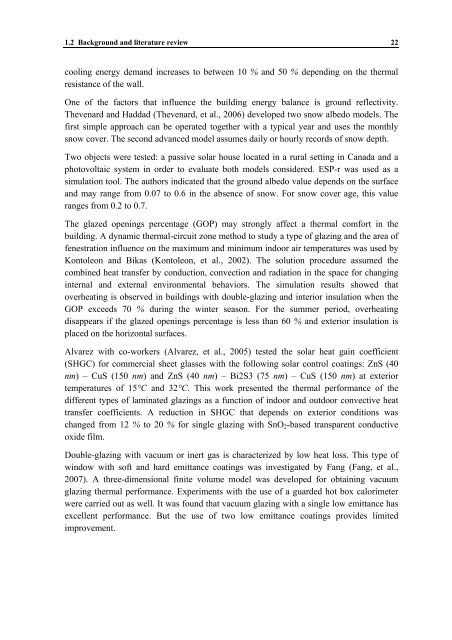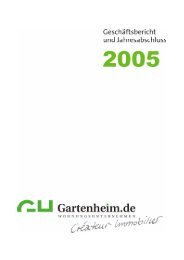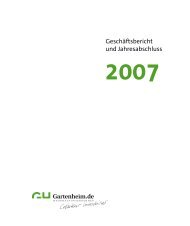analysis of the influences of solar radiation and façade glazing ...
analysis of the influences of solar radiation and façade glazing ...
analysis of the influences of solar radiation and façade glazing ...
Create successful ePaper yourself
Turn your PDF publications into a flip-book with our unique Google optimized e-Paper software.
1.2 Background <strong>and</strong> literature review 22<br />
cooling energy dem<strong>and</strong> increases to between 10 % <strong>and</strong> 50 % depending on <strong>the</strong> <strong>the</strong>rmal<br />
resistance <strong>of</strong> <strong>the</strong> wall.<br />
One <strong>of</strong> <strong>the</strong> factors that influence <strong>the</strong> building energy balance is ground reflectivity.<br />
Thevenard <strong>and</strong> Haddad (Thevenard, et al., 2006) developed two snow albedo models. The<br />
first simple approach can be operated toge<strong>the</strong>r with a typical year <strong>and</strong> uses <strong>the</strong> monthly<br />
snow cover. The second advanced model assumes daily or hourly records <strong>of</strong> snow depth.<br />
Two objects were tested: a passive <strong>solar</strong> house located in a rural setting in Canada <strong>and</strong> a<br />
photovoltaic system in order to evaluate both models considered. ESP-r was used as a<br />
simulation tool. The authors indicated that <strong>the</strong> ground albedo value depends on <strong>the</strong> surface<br />
<strong>and</strong> may range from 0.07 to 0.6 in <strong>the</strong> absence <strong>of</strong> snow. For snow cover age, this value<br />
ranges from 0.2 to 0.7.<br />
The glazed openings percentage (GOP) may strongly affect a <strong>the</strong>rmal comfort in <strong>the</strong><br />
building. A dynamic <strong>the</strong>rmal-circuit zone method to study a type <strong>of</strong> <strong>glazing</strong> <strong>and</strong> <strong>the</strong> area <strong>of</strong><br />
fenestration influence on <strong>the</strong> maximum <strong>and</strong> minimum indoor air temperatures was used by<br />
Kontoleon <strong>and</strong> Bikas (Kontoleon, et al., 2002). The solution procedure assumed <strong>the</strong><br />
combined heat transfer by conduction, convection <strong>and</strong> <strong>radiation</strong> in <strong>the</strong> space for changing<br />
internal <strong>and</strong> external environmental behaviors. The simulation results showed that<br />
overheating is observed in buildings with double-<strong>glazing</strong> <strong>and</strong> interior insulation when <strong>the</strong><br />
GOP exceeds 70 % during <strong>the</strong> winter season. For <strong>the</strong> summer period, overheating<br />
disappears if <strong>the</strong> glazed openings percentage is less than 60 % <strong>and</strong> exterior insulation is<br />
placed on <strong>the</strong> horizontal surfaces.<br />
Alvarez with co-workers (Alvarez, et al., 2005) tested <strong>the</strong> <strong>solar</strong> heat gain coefficient<br />
(SHGC) for commercial sheet glasses with <strong>the</strong> following <strong>solar</strong> control coatings: ZnS (40<br />
nm) – CuS (150 nm) <strong>and</strong> ZnS (40 nm) – Bi2S3 (75 nm) – CuS (150 nm) at exterior<br />
temperatures <strong>of</strong> 15°C <strong>and</strong> 32°C. This work presented <strong>the</strong> <strong>the</strong>rmal performance <strong>of</strong> <strong>the</strong><br />
different types <strong>of</strong> laminated <strong>glazing</strong>s as a function <strong>of</strong> indoor <strong>and</strong> outdoor convective heat<br />
transfer coefficients. A reduction in SHGC that depends on exterior conditions was<br />
changed from 12 % to 20 % for single <strong>glazing</strong> with SnO2-based transparent conductive<br />
oxide film.<br />
Double-<strong>glazing</strong> with vacuum or inert gas is characterized by low heat loss. This type <strong>of</strong><br />
window with s<strong>of</strong>t <strong>and</strong> hard emittance coatings was investigated by Fang (Fang, et al.,<br />
2007). A three-dimensional finite volume model was developed for obtaining vacuum<br />
<strong>glazing</strong> <strong>the</strong>rmal performance. Experiments with <strong>the</strong> use <strong>of</strong> a guarded hot box calorimeter<br />
were carried out as well. It was found that vacuum <strong>glazing</strong> with a single low emittance has<br />
excellent performance. But <strong>the</strong> use <strong>of</strong> two low emittance coatings provides limited<br />
improvement.





